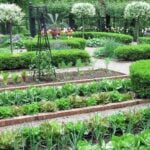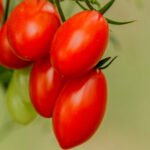Introduction
Gardening is a rewarding activity for those with a green thumb, as it provides an opportunity to provide yourself and your family with fresh produce. One of the best things about gardening is that you can get a jump start in the early spring, by planting certain vegetables such as onions, cabbage, beets, carrots and radishes. Planting garden vegetables early has several advantages.
For starters, these early crops help to give you the satisfaction of harvesting produce sooner rather than later. With summer storms common in many areas, planting crops such as cabbage and other cold season crops ensures they will have more time to reach full maturity before bad weather hits. Additionally, it allows you the opportunity to begin selling produce at local farmers markets earlier in the season.
Early planting makes sure you have ample amounts of fresh produce available throughout the entire season since you can stagger plantings every few weeks or so until your plot is producing regularly. This helps to eliminate sudden gluts and shortages which are often inevitable when only one large outdoor crop is planted each year. Finally, vegetables grown early in the gardening season tend to be more flavorful and nutrient dense since they receive more sunlight when temperatures are cooler than during the hottest parts of summer months.
Vegetable Groups That Benefit From Early Planting
Many vegetables benefit from being planted early in the spring. Usually, vegetables that are part of the brassica family – such as broccoli, cauliflower and cabbage – can be planted earlier than other types of vegetables. Root crops, like beets, carrots and onions, do best if they’re planted a few weeks before the average last frost date in your area. Look forward to harvest time favorites such as lettuces, peas and radishes when planting in early spring. Also, remember to plant spinach and kale – these cool weather crops thrive even if temperatures dip down into the 30s. If you have room for it, hardy herbs like parsley or chives can add a unique touch to your garden without needing too much tending or care. Many vegetable varieties should also be started indoors ahead of transplanting outdoors since they need more time to mature correctly; this includes tomatoes, peppers and eggplant. In areas with moderate temperatures throughout spring and summer seasons (such as those found in Mediterranean climates), most types of vegetables can be conveniently started outside in late winter/early spring for longer harvests throughout the year.
Preparing the Soil for Early Planting
In order to get the best start for your early garden vegetables, it is first important to properly prepare the soil. Before you decide which vegetables to plant, test the soil with a pH tester and add any necessary amendments such as compost or manure. The soil should be worked up to a depth of 8 inches, removing any rocks and debris, while turning it over to help aerate it. If your soil has been sitting around from previous gardening efforts, it can be helpful to rake across the surface until all of the old vegetation and roots are removed. Finally, when you’re ready for planting make sure that the area is well watered before sowing seeds or transplanting seedlings. This will ensure that everything goes smoothly and your plants have enough moisture throughout their growth cycle.
The Right Time to Plant Garden Vegetables Early
The early spring season is a great time to start planting your garden vegetables. Depending on your hardiness zone and location, you can typically plant cool-weather vegetables in March or April. Examples of vegetables you can plant early are peas, lettuce, spinach, cabbage, radishes, onions, kale, potatoes and carrots. Make sure you familiarize yourself with the optimal temperature range for the vegetables that you want to grow. For example: lettuce grows its best at temperatures of around 55°F (12°C) while peas thrive in slightly colder weather at 45–60°F (7–16°C). Additionally, consider when each type of vegetable will be ready to harvest since some plants take longer than others.
Essential Garden Supplies and Tools for Early Planting
For gardeners who want to get ahead of the season, investing in essential supplies and tools for early vegetable planting is a must. Here are some of the most important items:
1. Planters: These vessels will provide your plants with the soil and space needed to thrive. Choose planters that are adjustable or collapsible for an easy storage option when winter arrives.
2. Planting Ammendments (like compost, manure, or vermiculite): These ingredients will help your soil remain rich in nutrients and ultimately create a healthy foundation for your garden vegetables.
3. Fertilizer: Feed your vegetables’ needs with organic fertilizer – this helps keep them nourished throughout their growth cycle.
4. Watering Equipment: Make sure you have plenty of watering equipment on hand so that you can maintain proper hydration levels within the soil early on in the season. This includes a hose, sprinkler, nozzle attachments, etc.
5. Mulch: Applying mulch to beds and around plants creates porous layers that help control weeds and conserve moisture in the springtime months ahead of peak heatwave season.
6 Clay Soil Treatment: Clay soils sometimes don’t drain properly while trapping too much water – adding an amendment such as aeration beads can improve drainage levels while aiding oxygenation of roots – both integral aspects of successful gardening during early seasons!
Top Tips for Making Your Early Plantings Last
When planting vegetables early in the garden, it is important to make the most of your plantings so they will last through the summer. Here are some top tips for ensuring that your early vegetable plantings thrive:
1. Choose hardy varieties: Some varieties of vegetables are more tolerant to cooler temperatures and can be planted indoors earlier than others. Consider investing in seeds or seedlings of kale, lettuce, spinach, collards and Swiss chard that are able to withstand cooler conditions.
2. Mulch your plants: To help insulate the soil and keep moisture in, mulch around plants with straw or leaves as soon as possible after planting. This can help protect against extreme fluctuations in temperature at night and during hot days.
3. Plan for succession planting: Plant your seeds or seedlings in successions throughout April so you have a steady supply of fresh produce that continues ripening over a longer period of time rather than being bombarded all at once by a large number of plants that need harvesting all at once.
4. Plant cover crops if needed: If an area needs warming up, consider planting some cover crops such as rye grass alongside your main crop ones to help raise soil temperature faster and boost nutrient levels before you transplant other tender varieties into the garden later on into the season when it’s much warmer.
5. Keep moisture levels up: Once planted, water your plants every few days if there’s inadequate rainfall but try not to flood them either as too much water will also cause problems to their growth and development – depending on the variety!
Summary
Garden vegetables that you can plant early in the season provide many benefits to people with small gardens. Early planting allows gardeners to get a head start on their gardening, leading to a larger harvest later in the season. Planting early also helps the gardener stagger their crops, giving them multiple harvests throughout the year. Many cool-weather crops can be planted as soon as the soil is workable and weather permits. These include leafy greens such as lettuce, spinach and kale; carrots, radishes and peas; broccoli, cauliflower and cabbage; onions, garlic and potatoes; turnips, parsnips and some varieties of beans. A few warm-weather crops can also be planted early if sheltered from harsh elements — tomatoes, peppers, squash of all kinds — making it possible for gardeners to plant nearly all types of vegetables early in their growing season. With careful planning and protection from inclement weather conditions when necessary, anyone with a small garden space can maximize its potential by planting early each season.

If you’re looking to get into vegetable gardening, or are just looking for some tips on how to make your current garden better, then you’ve come to the right place! My name is Ethel and I have been gardening for years. In this blog, I’m going to share with you some of my best tips on how to create a successful vegetable garden.





